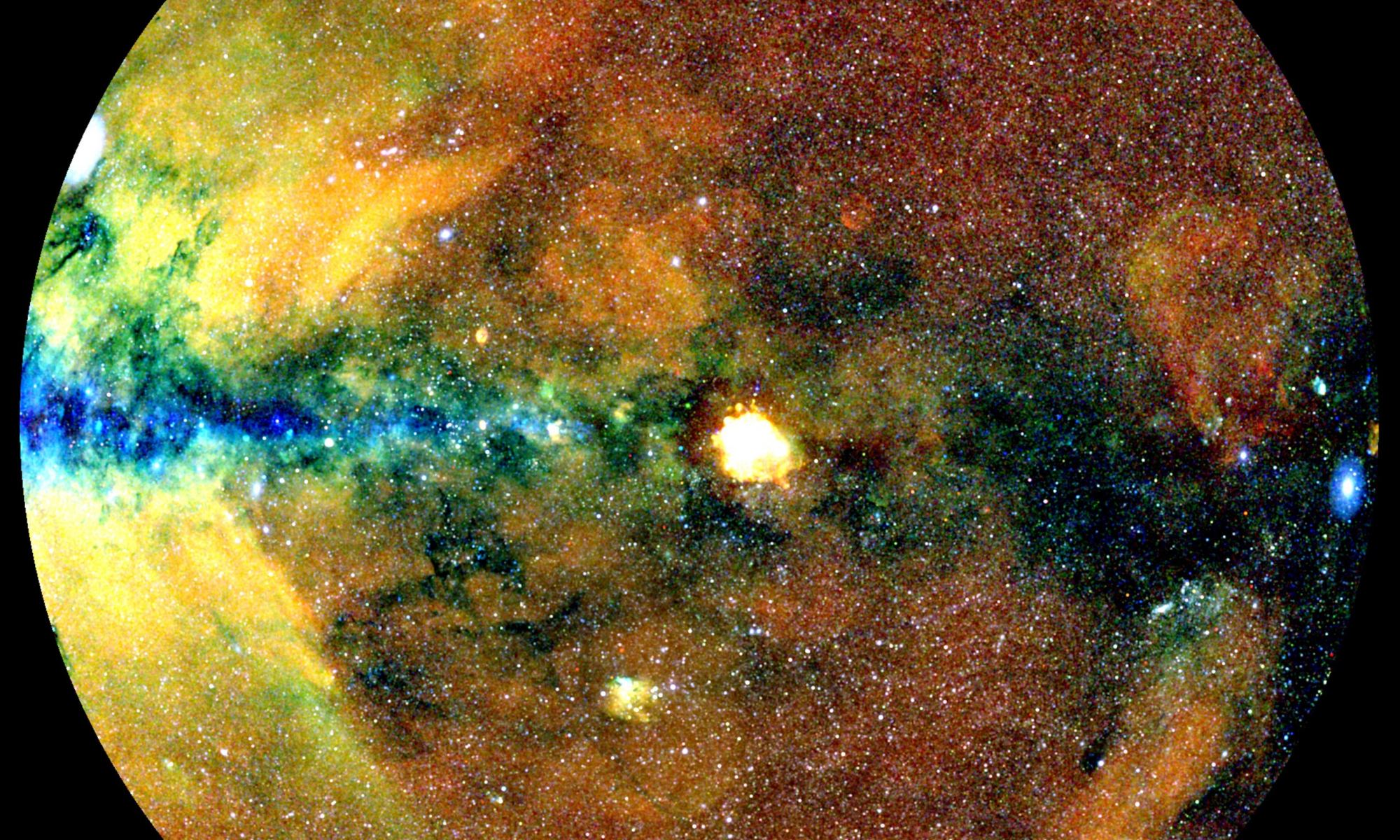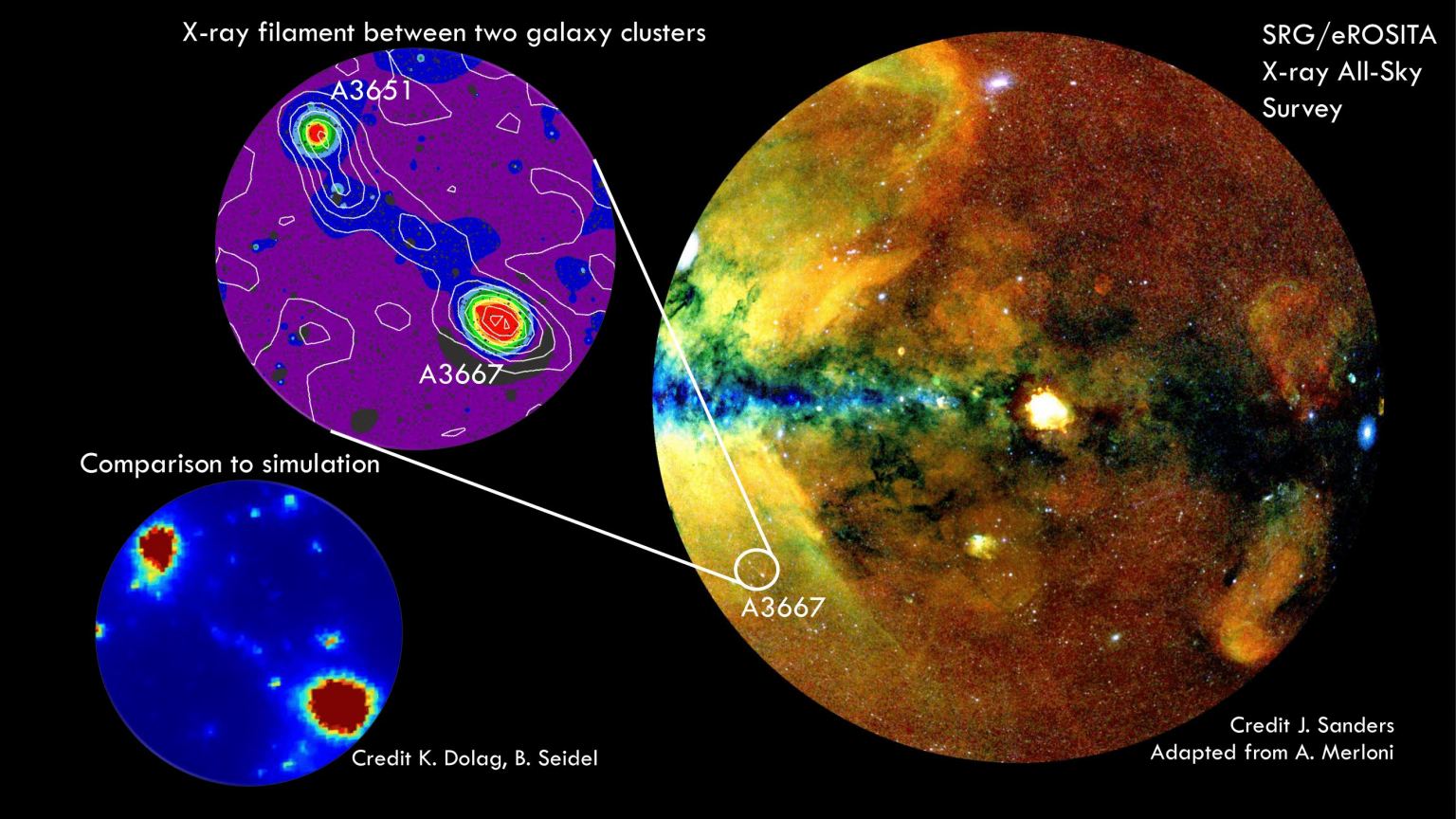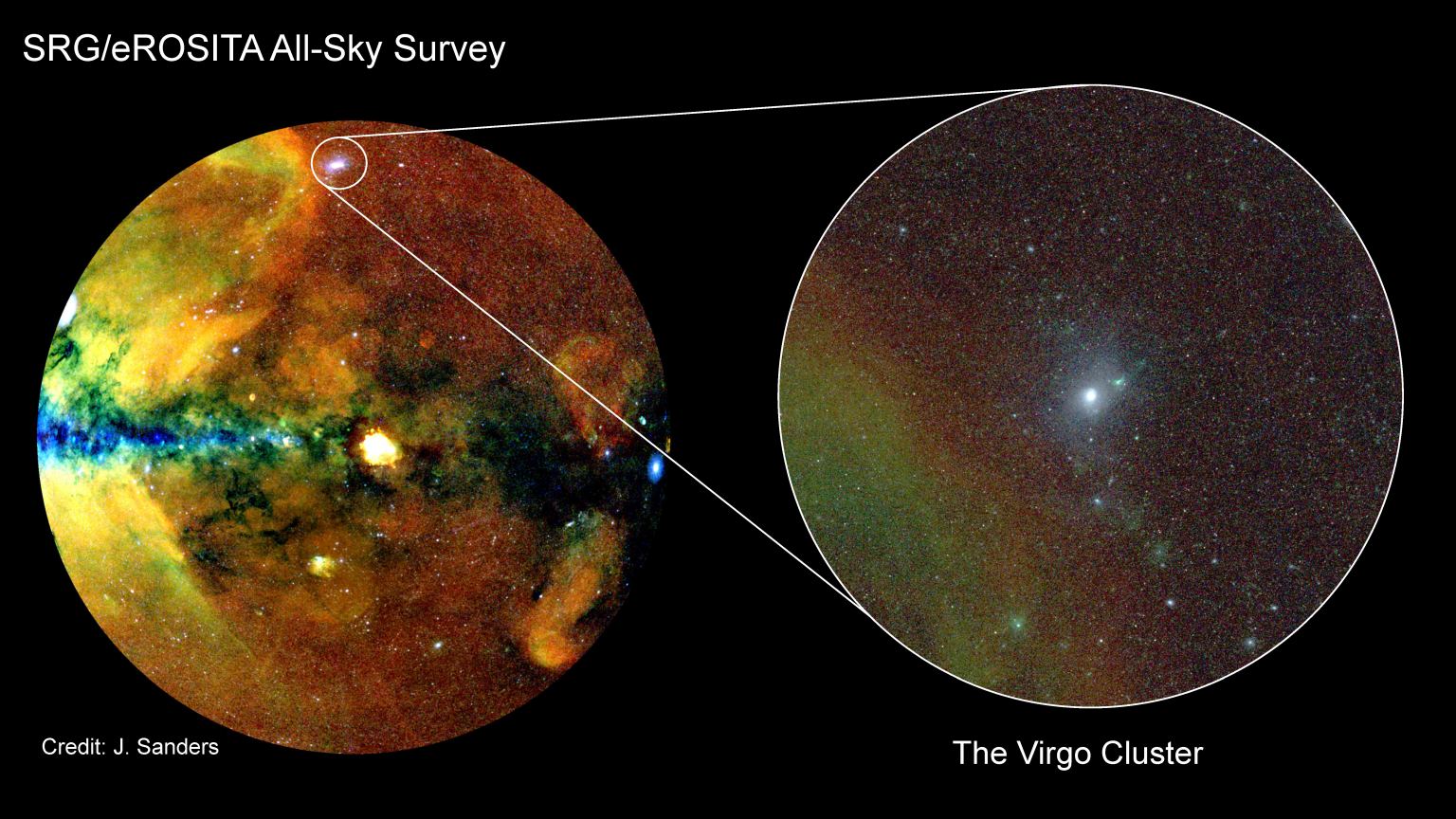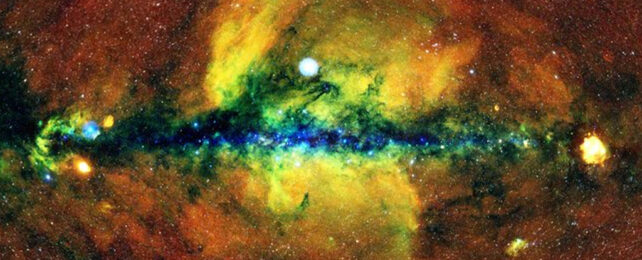There's an old trope in science fiction about someone suddenly getting X-ray vision and looking through solid objects. It turns out to be a physical impossibility with our Mark I eyeballs. However, astronomers have found a way around that challenge that lets us study the Universe with X-ray vision.
It's called X-ray astronomy and it's been around for 60 years. It reveals some of the most energetic and violent events and objects in the cosmos. Those include things like bright quasars, supernova explosions, streams of hot gas between galaxies, and hot, young stars.
Recently, astronomers in the eROSITA consortium at the Max Planck Institute for Extraterrestrial Physics announced the latest trove of X-ray data from the eROSITA survey. It covers half the X-ray sky and reveals information about 900,000 distinct X-ray sources.
That's more than all the ones ever detected in X-ray astronomy's decades of history, including discoveries made with Chandra and other orbiting observatories.

About eROSITA
eROSITA is a soft X-ray imaging telescope aboard the Spectrum-RG satellite. Its first all-sky survey, called eRASS1, took place over 7 months beginning on December 12, 2019.
At its most sensitive setting, the telescope detected 170 million X-ray photons. That allowed the cameras to measure their energies and arrival times.
The astronomy team, led by principal investigator Andrea Merloni, put together a first-release catalog of data. They also published more than 50 new science papers based on their findings.
After finishing this first survey, the instrument carried out three more scans of the entire sky between June 2020 and February 2022. That huge treasuring of X-ray data will be released shortly. The video below explains more about the mission.

eROSITA's Treasury of X-ray Sources
X-ray astronomy focuses on hot and energetic objects and events in the Universe. Those would be the cores of galaxies (where supermassive black holes lurk), supernova explosions, newborn stars, and other places where matter gets heated to high temperatures.
This preliminary data eRASS1 data set pinpoints about 710,000 supermassive black holes, 180,000 X-ray emitting stars in the Milky Way, and 12,000 clusters of galaxies. It also covers a small number of other exotic sources like X-ray-emitting binary stars, supernova remnants, pulsars, and other objects.
"These are mind-blowing numbers for X-ray astronomy," says Andrea Merloni, eROSITA principal investigator and first author of the eROSITA catalog paper. "We've detected more sources in 6 months than the big flagship missions XMM-Newton and Chandra have done in nearly 25 years of operation."
The eROSITA first data release is a rich, "multi-layered" look at the sky at several X-ray energies. Each energy level tells astronomers something about the objects and events emitting the X-rays. And, for each set of images and data, the consortium provides more information.
There are lists of source classes, sky positions, energies, and precise arrival times of the photons to the instrument.
"We've made a huge effort to release high-quality data and software," added Miriam Ramos-Ceja, who leads the eROSITA Operations team. "We hope this will broaden the base of scientists worldwide working with high-energy data and help push the frontiers of X-ray astronomy."

Zeroing in on Specific X-ray Objects
eROSITA's science objectives are to use X-rays as a way to detect the hot intergalactic medium of 50 to 100,000 galaxy clusters and groups. It also looks at hot gas in filaments between them. Those filaments glow in X-rays.
The instrument is also tasked with detecting accreting black holes hidden in galaxies. Finally, it studied the physics of galactic X-ray sources (which include pre-main-sequence stars, supernova remnants, and X-ray binaries).
At least one of the papers released with the new survey data uses X-ray data to constrain cosmological models using clusters of galaxies. In one release image, we see a newly discovered filament of material.
It stretches between one portion of the galaxy cluster Abell 3667 and the nearby cluster Abell 3651. This may help astronomers determine how much matter exists in the so-called "warm-hot intergalactic medium". It gives insight into the formation of large-scale structures (like galaxy clusters) in the Universe.
The nearby Virgo Cluster of galaxies also shows up in the eRASS1 survey and provides a way to study large-scale filamentary structures. In particular, astronomers want to understand the physical effects operating in the outskirts of these massive galaxy clusters.
Using the new survey data, plus other all-sky images, a science team explored the structure of the cluster's outskirts. That included high-energy emissions around galaxies and groups within the cluster. They also studied a so-called 320-kiloparsec-long "X-ray extension" near the galaxy M49.

eROSITA's Past Work and Future
eROSITA has enabled a huge leap forward in X-ray astronomy since its launch in June 2019. It began operations in October of that year, providing high-resolution X-ray vision of the cosmos. As it scanned the sky, it glimpsed changes in a distant quasar called SMSS J114447.77-430859.3.
Those changes give some clues to the growth of the black hole at the heart of the quasar. It observed changes in the brightness variations at the heart of the quasar, indicating that the black hole swallows some of the material that strays into its event horizon. Other material escapes in the form of powerful winds.
The instrument has also detected a newly forming black hole in the early Universe and traced the existence of hot gas all around our own Milky Way Galaxy. The instrument had its first light on October 22, 2019. Currently, it's in safe mode and technicians are assessing its health and status.
This article was originally published by Universe Today. Read the original article.
